Results
-
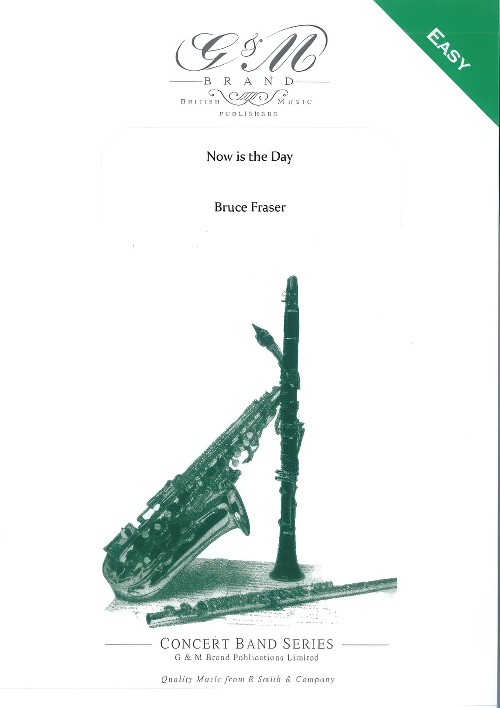 £44.95
£44.95Now is the Day (Concert Band - Score and Parts) - Fraser, Bruce
Warlike, then noble, Now is the Day is based on the great figure in Scottish history - William Wallace, often called Braveheart. Opening with the woodwinds playing drums along with the percussion section against brass fanfares, this piece will create an air of excitement. An alto saxophone solo provides a brief moment of solace between the battle scenes.
Estimated dispatch 7-14 working days
-
 £8.95
£8.95Now is the Day (Concert Band - Score Only) - Fraser, Bruce
Warlike, then noble, Now is the Day is based on the great figure in Scottish history - William Wallace, often called Braveheart. Opening with the woodwinds playing drums along with the percussion section against brass fanfares, this piece will create an air of excitement. An alto saxophone solo provides a brief moment of solace between the battle scenes.
Estimated dispatch 7-14 working days
-
 £289.99
£289.99"...Then Thy Words Will Take Wing..." (Concert Band - Score and Parts)
...Then Thy Words Will Take Wing... is a four movement composition based upon drawings made by Russian painter Zinovii Tolkatchev (1903-1970), who served as official artist during the liberation of concentration camps in Auschwitz. After the war, Tolkatchev's works were published and now tour the world as a travelling exhibition. This composition is a tribute to the victims of the Holocaust who still remain nameless, and is a powerful piece to include in any concert programme.
Estimated dispatch 7-14 working days
-
£79.50
Boy Bands: Then and Now
Estimated dispatch 7-14 working days
-
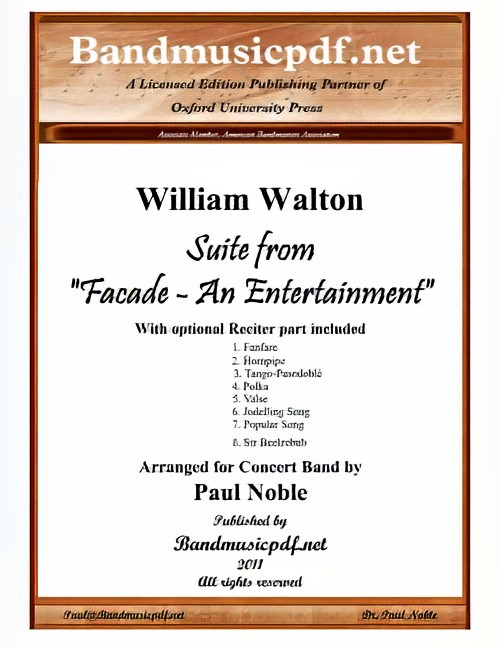 £375.00
£375.00Facade - An Entertainment, Suite from (Concert Band with Optional Narrator - Score and Parts) - Walton, William - Noble, Paul
This Suite from Facade - An Entertainment, composed by William Walton, with poems by Dame Edith Sitwell, presents for the first time a grouping of movements selected and arranged by Paul Noble for Concert Band and optional Reciter. The original composition was written between 1921 and 1928, containing forty-three numbers. They had their origin in a new style of poetry that Edith Sitwell evolved in the early 1920s, poems that her brother Osbert later described as 'experiments in obtaining through the medium of words the rhythm and dance measures such as waltzes, polkas, foxtrots... Some of the resulting poems were sad and serious... Others were mocking and gay... All possessed a quite extraordinary and haunting fascination.' Possibly influenced by the dance references in some of the numbers, Osbert declared that the poems might be further enhanced if spoken to a musical accompaniment. The obvious choice of composer was the young man who lived and worked in an attic room of the Sitwell brothers' house in Carlyle Square W[illiam] T[urner] Walton, as he then styled himself. The now historic first performance of the Facade Entertainment took place in an L-shaped first-floor drawing-room on January 24, 1922. Accompaniments to sixteen poems and two short musical numbers were performed by an ensemble of five players. The performers were obscured from the audience by a decorated front curtain, through which a megaphone protruded for Edith to declaim her poems. This was, as she put it, 'to deprive the work of any personal quality'. The first public performance of Facade was given at the Aeolian Hall on June 12, 1923. By now, fourteen poems had been set, others revised or rejected, and an alto saxophone added to the ensemble. The occasion gave rise to widespread publicity, both pro and contra, and the name of the twenty-one year old W. T. Walton was truly launched. In the ensuing years the Facade has gone through revisions and additions, with full orchestral arrangements of selected movements being made without the Reciter. Former Band Director Robert O'Brien arranged some movements for band, again without Reciter, which are now out of print. So this 'history making' addition is the first opportunity for Concert Bands to present some movements of Facade with poems as originally intended. The luxury of electronic amplification allows the full ensemble to perform without necessarily overshadowing the Reciter. And the arrangements are written with considerable doubling so that the ensemble may play in full, or reduced in size as may be desired for proper balance. And, though not encouraged, the arrangements are written so that the band can perform the music without the Reciter. Program notes are adapted in part from those written by David Lloyd-Jones and published by Oxford University Press in the Study Score of William Walton's Facade Entertainments.
Estimated dispatch 7-14 working days
-
 £193.20
£193.20CASTRVM - Lionel Beltrán-Cecilia
CASTRVM is a symphonic episode inspired by four of the main civilizations that have coexisted over time in Ulldecona's Castle. With its melodies and sound effects, the composer tries to transport the listener through a trip to four uninterrupted movements, from the beginnings of this small settlement, creating a natural atmosphere recreated by the voice and the singing of birds to take us into the history with the first inhabitants, the Iberians, giving strength to the introduction of the composition, to move on to the time of the Andalusians, which with a melody in the form of a dance marked by percussion will transport us to take a walk in the surroundings of its circular tower. Next, and with strength, we arrive at the medieval and Christian period, marked in the score by the brass instruments, in this fragment we find moments that take us into the church of "Santa Mara de los ngeles", with melodies that evoke resonance and pomposity, continuing until we find the immense square tower, symbol of the fortress and homage, finally used as a prison and arsenal of those times. Then, there is a small slow march that will move us to some measures of strong stridency to finish with the whole section of low brass having its great moment of prominence, down to we reach the last part, Qna, a name that is recited during the musical piece and one of the names given in the past to the area that could be seen from the castle, where the change of location of the new town is recreated leaving the castle site, but always looking at it with respect and admiration as at the beginning of what is now the current Ulldecona, in this part, the composer plays a bit with a very well-known and significant melody for the inhabitants of Ulldecona, the "Jota Vieja", first making a reflex effect of all its melody and then only with the first six notes of this one, which builds a bridge until reaching the march and, later, the grand finale of this symphonic episode. The work was commissioned by Ulldecona Town Council and the Ulldecona Music Band, led by its conductor Joan Nadal i Girona, to commemorate the 800th anniversary of the donation of the Town Charter of Ulldecona "the old" (1222-2022), as part of the PATRIMONIUM 20.22 programme, "La Banda (Sonora) del Castell" (The soundtrack of the Castle).CASTRVM consists of: I.Iberians: stone and ironII.AndalusiansIII.The square tower: fortress and homageIV.Qna
Estimated dispatch 7-14 working days
-
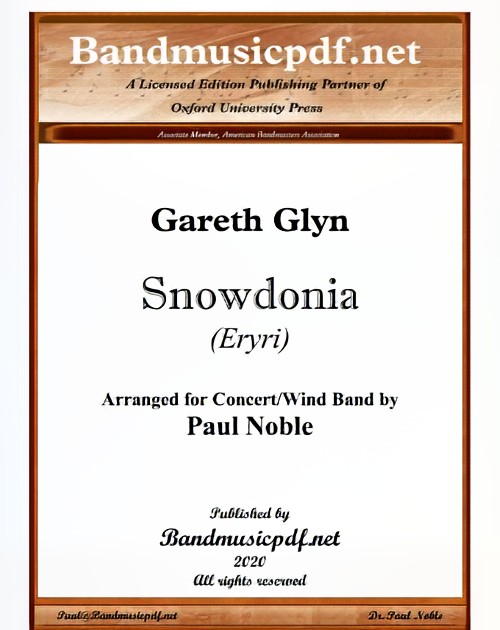 £225.00
£225.00Snowdonia (Concert Band - Score and Parts) - Glyn, Gareth - Noble, Paul
From the composer's home on Anglesey, the magnificent mountain range of Eryri ('abode of the eagles'), known as Snowdonia in English, can be seen clearly, and it is this fine view that spurred him to compose this tone-poem. Just as the mountains change from season to season, and the view alters as one climbs the slopes, there are several distinct and contrasting sections to the piece itself. First we hear the bustle and excitement of the area in summer, as tourists flock to the foot of Snowdon; then an impression of the confident striding of those setting off to climb. After a brisk climax, the codetta to the energetic theme becomes the basis of a new, folk-like, idea which develops into a majestic anthem suggesting the grandeur of the mountain-range. The famous little train of Snowdon is brought to mind by a repetitive, mechanical idea which leads to a section combining both the main themes of excitement and grandeur, and to a powerful climax. Then, after a moment of silence, the atmosphere changes completely. Here is the ineffable solitude - and timeless beauty - of Snowdonia; but from the cellos (saxophone) we soon hear the folk-like theme slowly re-asserting itself, resolving into a peremptory fanfare which leads back to the opening mood and a return of the opening theme. But the final word is given to the 'solitude' motive, now transformed into a resolute chorale representing the eternal permanence of these extraordinary mountains.
Estimated dispatch 7-14 working days
-
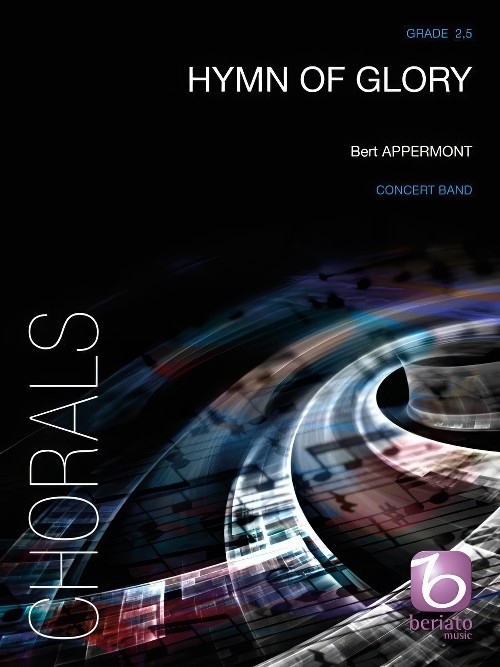 £76.99
£76.99Hymn of Glory (Concert Band - Score and Parts) - Appermont, Bert
This melodic hymn begins with a lyrical melody, handled by various instrument groups. After a gradual build, a first climax is reached, in which the brass instruments give full vent to their glorious sound in jubilation. Now we hear a second theme, resounding in the euphoniums, which ushers in a moment of rest. Then the excitement gathers again, building to a great tutti. The main theme is taken up once more, sounding now as a kind of universal gratitude.Duration: 4:00
Estimated dispatch 7-14 working days
-
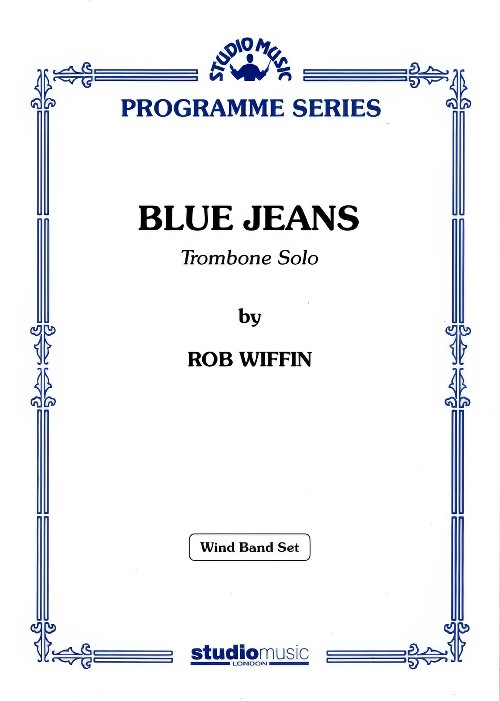 £59.95
£59.95Blue Jeans (Trombone Solo with Concert Band - Score and Parts) - Wiffin, Rob
In 2008 the trombonist, Chris Jeans, was invited to be a featured soloist at a British Trombone Society event. He contacted Stan Kitchen at Studio Music Company to see if he had any new material for trombone. Stan then got in touch with me, as I had already written a piece for another trombone player, Brett Baker. This piece, 'Shout' was programmed for the same event so we needed to find something new for Chris.The title 'Blue Jeans' came to my mind, thus linking a blues-style piece with the obvious reference to Chris's surname. I spoke to Chris and he liked the sound of it so then I had to go away and write a solo to match the title!I managed to get a version with piano accompaniment done in time for Chris to perform at the trombone event and have now had a chance to complete the band version. Chris is a great chap, a good friend and a wonderful trombone player so I hope people enjoy listening to this solo that bears his name.- Rob WiffinDuration: 3.30
Estimated dispatch 7-14 working days
-
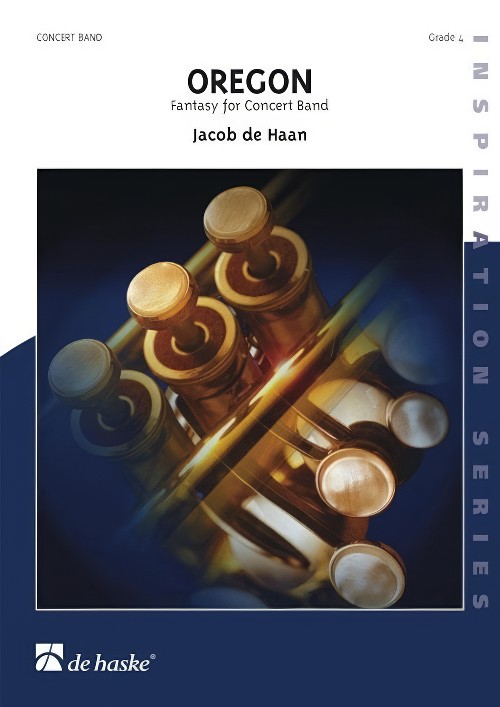 £137.99
£137.99Oregon (Concert Band - Score and Parts) - De Haan, Jacob
This fantasy tells the story of Oregon, one of America's north-western states. Traveling by train on the Northern Pacific Railroad, the listener is taken through the fascinating Oregon landscape. Indians, cowboys, golddiggers and hooded wagons will file past on this adventurous journey. The piece has some similarities with a soundtrack of a movie. Various melodies, which could be the main themes of a movie, pass the review.The piece begins in a slow movement, introducing the first theme in minor. Then we hear in the following fast movement the trombones imitate the train, whistling the steam-flute. We hear the characteristic minor theme again, but now in different variants (also in major). The rythmic structure of "western" stile and rock succeed each other. This is leading to the slow movement, where the signals of horns and trumpets introduce a wonderful vocal melody. After this characteristic melody, the fast movement appears shortly again, the trombones whistling the steam-flute again (now in major). We hear also some musical elements, that plays a part in the following Presto. Barchanges, jazzy chords, interesting rhytmic patterns (with bongo) and an original theme are the characteristics of this Presto. After this, the horns announce the last section of the piece. Interesting is the fact that we hear in this Allegro section a variant of the vocal melody in the slow movement. Also the Presto theme returns shortly, followed by the Allargando, which is a grand characteristic end of a soundtrack. The movie of our travelling fantasy has come to an end.Duration: 9:00
Estimated dispatch 7-14 working days
